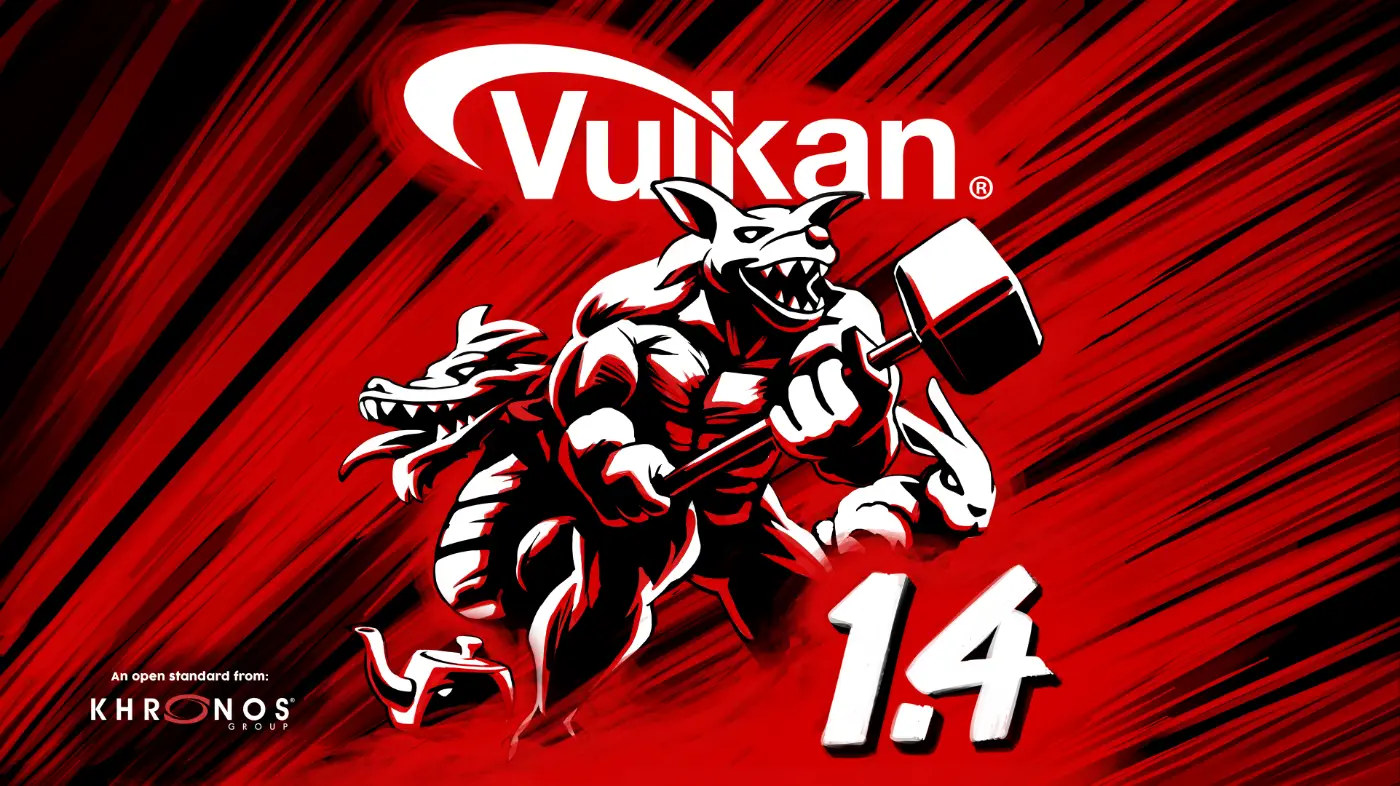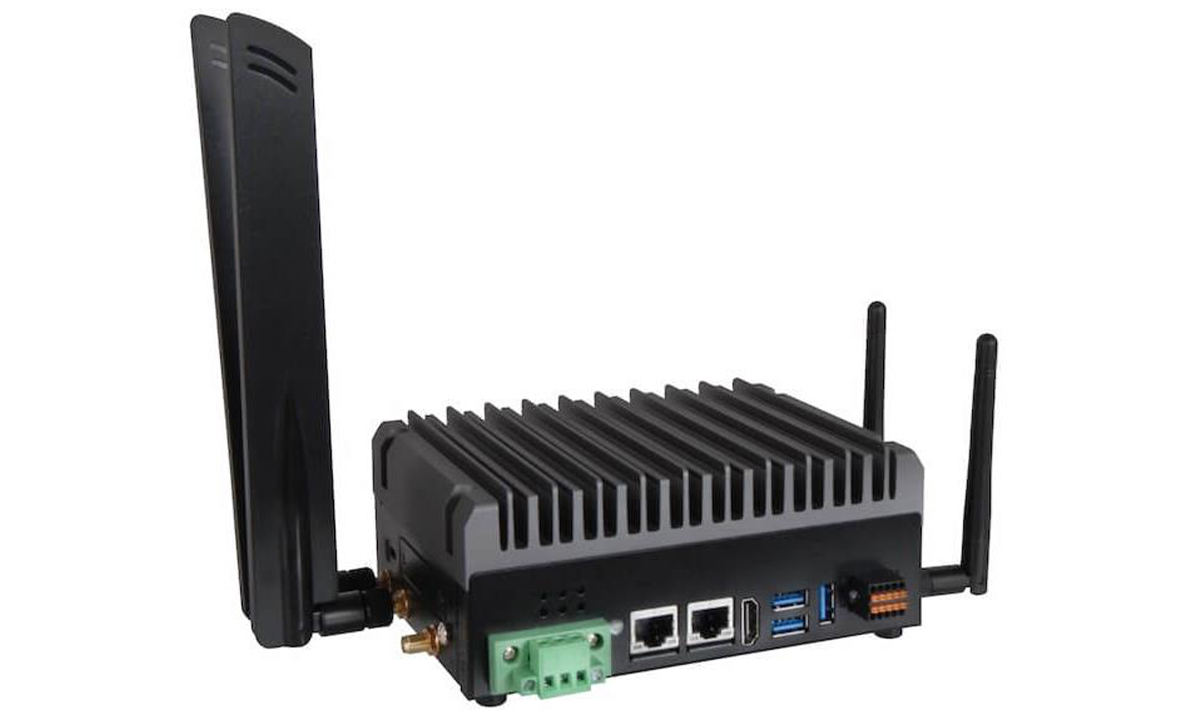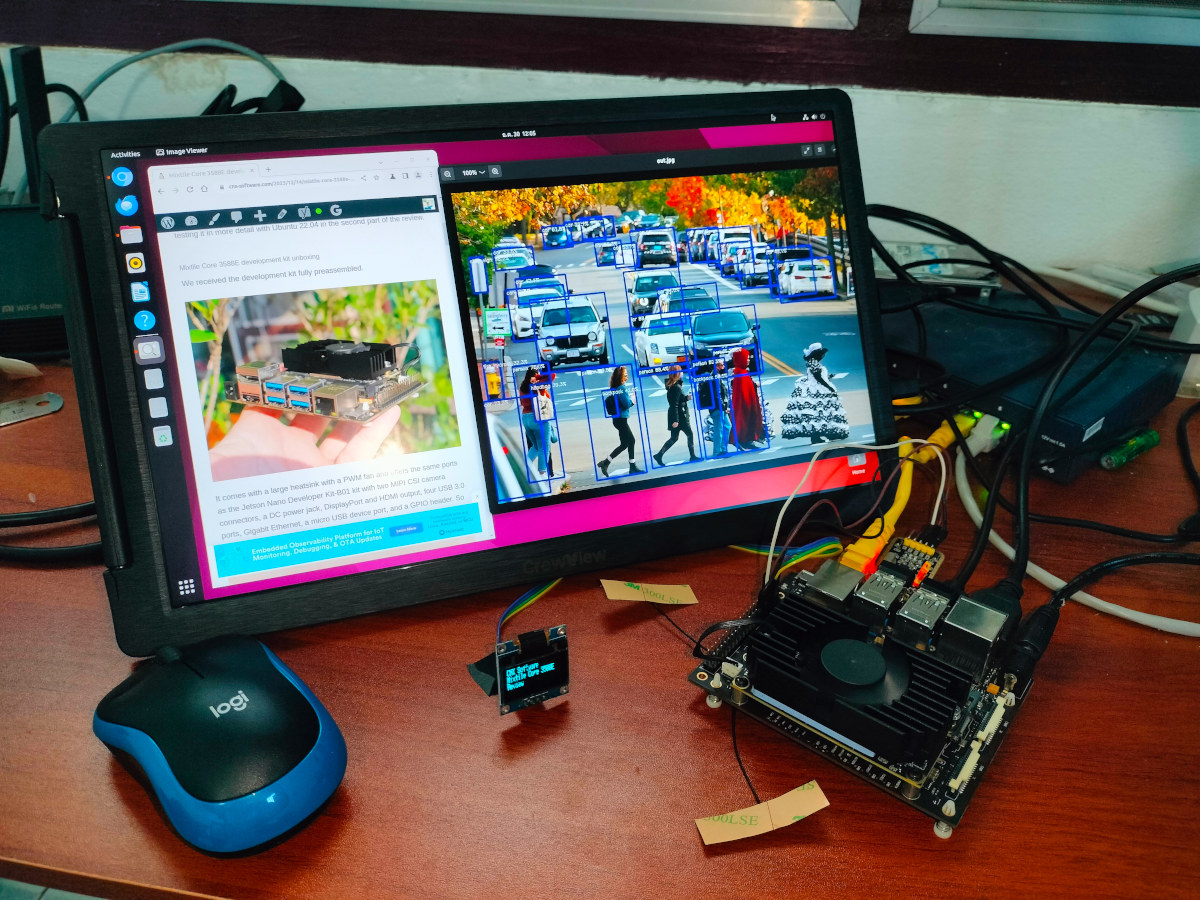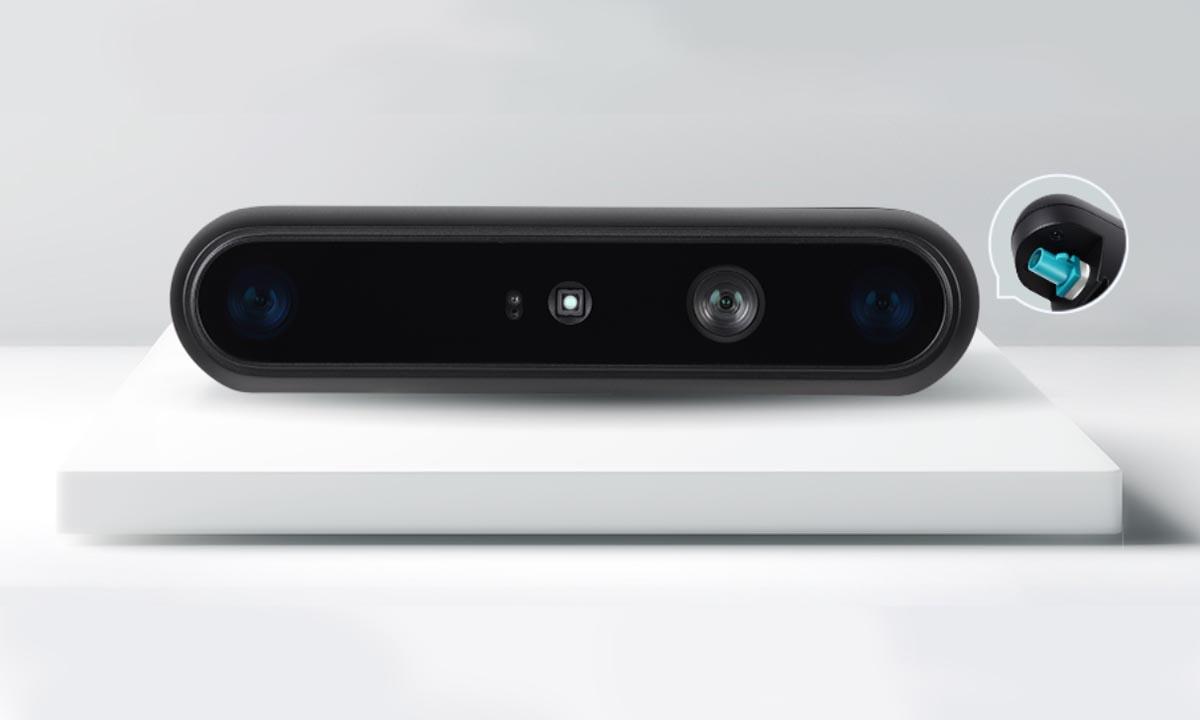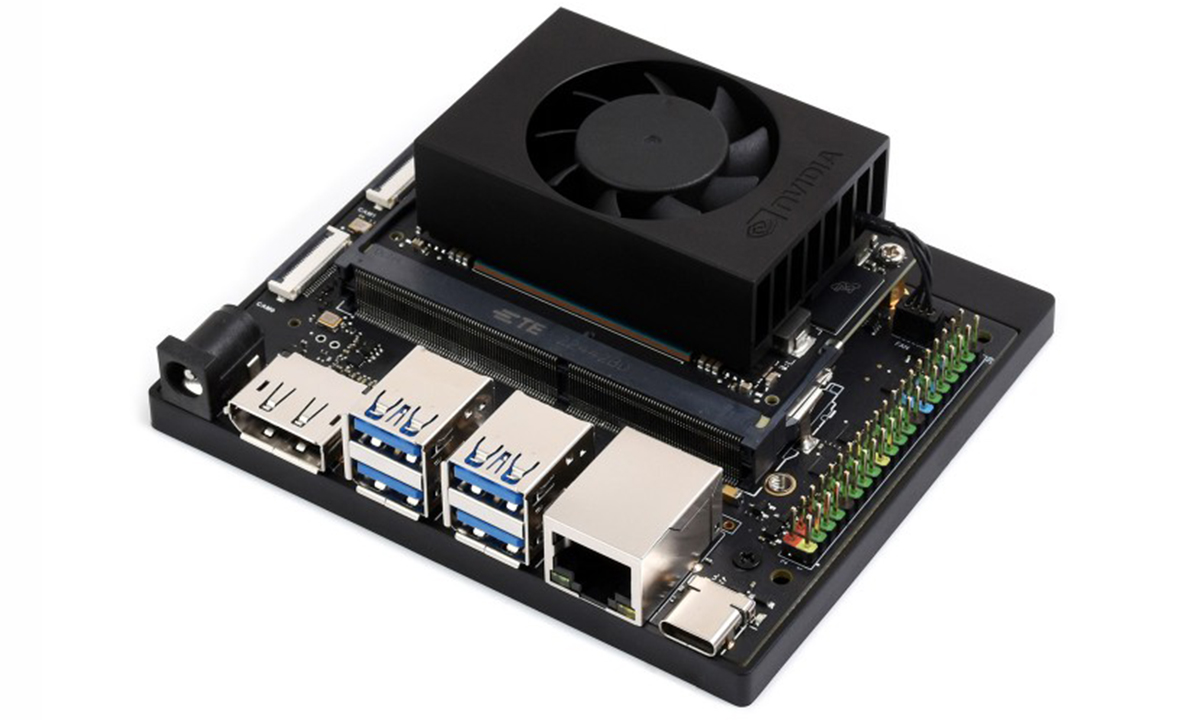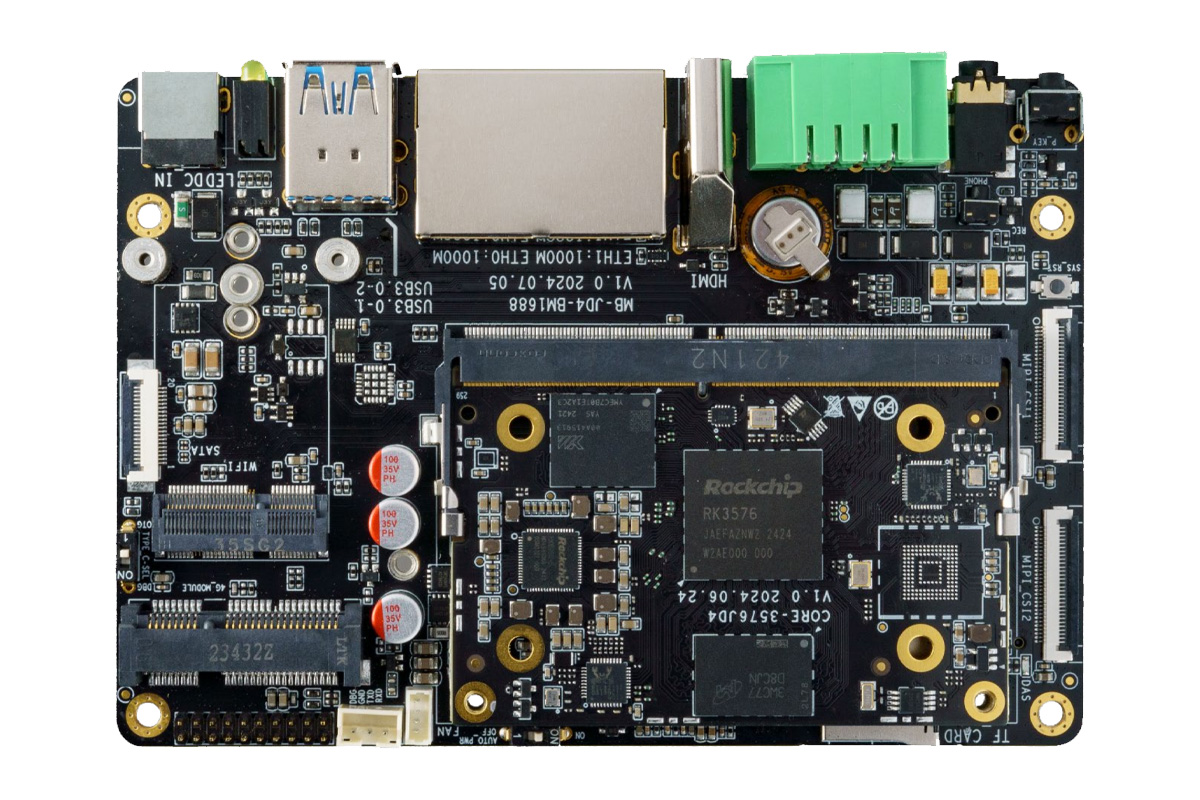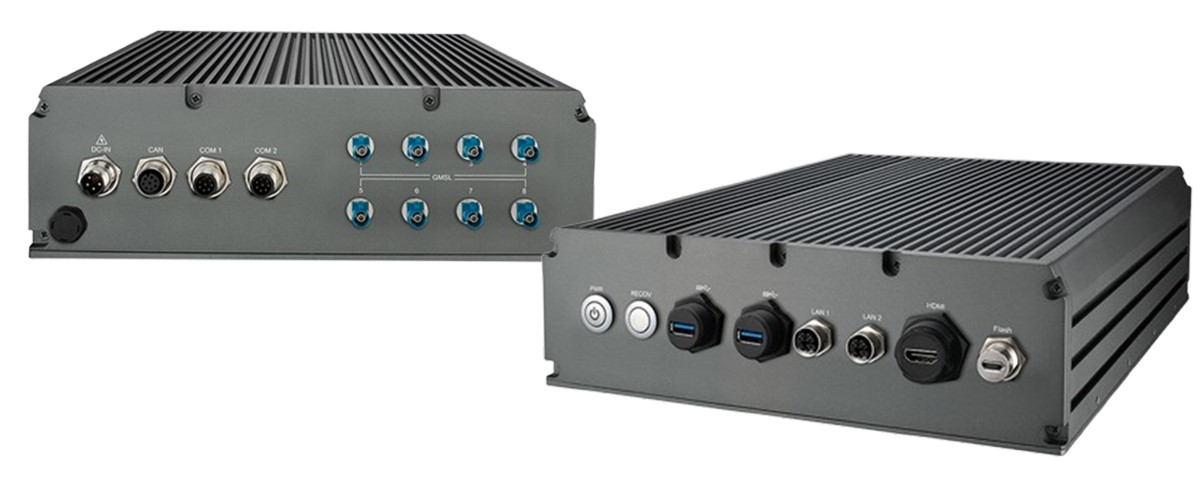The Khronos Group has just announced the release of Vulkan 1.4 cross-platform 3D graphics and compute API. The new release makes some of the optional extensions and features mandatory, adds streaming transfers, and supports 8K rendering on up to eight targets. Minimum hardware limits have also been increased including at least seven maxBoundDescriptorSets and eight maxColorAttachments. Vulkan 1.4 highlights: Streaming Transfers: new implementation requirements to ensure applications can stream large quantities of data to a device while simultaneously rendering at full performance. Previously optional extensions and features critical to emerging high-performance applications are now mandatory in Vulkan 1.4, ensuring availability across multiple platforms. These include push descriptors, dynamic rendering local reads, and scalar block layouts. Maintenance extensions up to and including VK_KHR_maintenance6 are now part of the core Vulkan 1.4 specification. 8K rendering with up to eight separate render targets is now guaranteed to be supported, along with several other […]
Portwell PJAI-100-ON rugged Edge AI embedded system features NVIDIA Jetson Orin Nano for industrial quality control
Portwell has launched the PJAI-100-ON, a rugged and compact embedded system powered by the NVIDIA Jetson Orin Nano SOM and designed for demanding industrial environments. It operates reliably across a wide temperature range of -20°C to 60°C with a fanless, quiet design that requires minimal maintenance. Equipped with dual Gigabit Ethernet LAN ports and M.2 slots for wireless connectivity, the PJAI-100-ON is tailored for Edge AI applications. This system enhances quality control in manufacturing by using advanced optical inspection technology to detect defects, improving quality assurance and reducing production errors. Previously, we covered other Jetson Orin Nano embedded systems, including Aetina’s AIE-KO21, AIE-KO31, AIE-KN31, and AIE-KN41 and DFI X6-MTH-ORN fanless Edge AI Box computer, as well as Portwell’s WEBS-21J0-ASL another rugged embedded system built around an Intel Atom x7000RE Amstom Lake Nano-ITX motherboard and equipped with an Hailo-8 AI accelerator. Portwell PJAI-100-ON specifications: SoM – NVIDIA Jetson Orin Nano CPU […]
Giveaway Week 2024 – Mixtile Core 3588E development kit with RK3588 SoM
Day 4 of Giveaway Week 2024 will be for a development kit comprised of the Mixtile Core 3588E SoM based on Rockchip RK3588 octa-core Cortex-A76/A55 SoC and a Leetop A206 carrier board compatible with NVIDIA Jetson SO-DIMM modules. This development kit is mostly useful to evaluate the Mixtile Core 3588E system-on-module, but it can be used just like any Rockchip RK3588 SBC with the company providing a Ubuntu 22.04 Desktop image for the board. Since it relies on the same edge connector as the NVIDIA Jetson TX2 NX module, the Core 3588E module can also be connected to other compatible carrier boards. I reviewed the Mixtile Core 3588E development kit last December running Ubuntu 22.04. At the time, I found the Mixtile Core 3588E system-on-module performs well with the pre-loaded Ubuntu 22.04 image with a similar performance as on other Rockchip RK3588 hardware platforms. 3D graphics acceleration was working with […]
Orbbec Gemini 335Lg 3D depth and RGB camera features MX6800 ASIC, GMSL2/FAKRA connector for multi-device sync on NVIDIA Jetson Platforms
The Orbbec Gemini 335Lg is a 3D Depth and RGB camera in the Gemini 330 series, built with a GMSL2/FAKRA connector to support the connectivity needs of autonomous mobile robots (AMRs) and robotic arms in demanding environments. As an enhancement of the Gemini 335L, the 335Lg features a GMSL2 serializer and FAKRA-Z connector ensuring reliable performance in industrial applications requiring high mobility and precision. The Gemini 335Lg integrates with the Orbbec SDK, enabling flexible platform support across deserialization chips, carrier boards, and computing boxes, including NVIDIA’s Jetson AGX Orin and AGX Xavier. The device can operate in both USB and GMSL (MIPI) modes, which can be toggled via a switch next to the 8-pin sync port, with GMSL as the default. The GMSL2/FAKRA connection provides high-quality streaming with synchronized multi-device capability, enhancing adaptability for complex setups. Previously, we covered several 3D cameras from Orbbec, including the Orbbec Femto Mega 3D […]
NVIDIA Jetson Orin NX development kit comes with up to 16GB RAM, 128GB NVMe SSD, WiFi 5
Waveshare’s Jetson Orin NX Development Kit is an AI edge computing platform tailored for robotics and AI-driven applications built around the NVIDIA Jetson Orin NX module 8GB/16GB delivering up to 70 TOPS and 100 TOPS of AI performance, respectively. It features the JETSON-ORIN-IO-BASE base board, which provides essential interfaces like an M.2 socket, DisplayPort (DP) video output, and USB ports, making it easy for users to connect multiple sensors and peripherals for high-performance AI tasks. The kit includes a 128GB NVMe SSD for high-speed storage and comes pre-installed with the AW-CB375NF wireless network card, which supports dual-band Wi-Fi 5 and Bluetooth 5.0. The Jetson Orin NX module operates within a configurable power range of 10W to 25W, delivering up to 5x the performance of the Jetson Xavier NX module. This development kit is suitable for large-scale AI projects requiring multiple concurrent inference pipelines and high-speed data processing. Previously, we covered […]
Firefly introduces Rockchip RK3576 SoM and All-in-One carrier board compatible with NVIDIA Jetson Orin Nano and Orin NX modules
Firefly has released a Rockchip RK3576 SoM and development board called the Core-3576JD4 Core Board with a SO-DIMM edge connector and the AIO-3576JD4 carrier board respectively. The core board or the SoM is built around an octa-core 64-bit processor with a Mali G52 MC3 GPU and a 6 TOPS NPU, so it can handle demanding AI tasks while maintaining low power consumption. The AIO-3576JD4 is a full-fledged carrier board with a wide range of on-board interfaces, like dual Gigabit Ethernet ports, MIPI-CSI, HDMI 2.1, USB 3.0, USB 2.0, USB Type-C, a Phoenix connector for serial, dual-row pin headers (SPI, I2C, Line in, and Line out), an M.2 socket for 5G, a mini PCIe for 4G LTE, an M.2 socket for WiFi 6/BT 5.2, and a third M.2 socket for SATA/PCIe NVMe SSD expansion. RK3576 AI SoM and dev board specification Core-3576JD4 specifications SoC – Rockchip RK3576 CPU – Octa-core CPU […]
Vecow RAC-1000 rugged Edge AI systems feature NVIDIA Jetson AGX Orin, waterproof ports, GMSL2 camera connectors
Vecow’s RAC-1000 series Edge AI systems are powered by NVIDIA Jetson AGX Orin 32GB or 64GB system-on-modules, offering up to 275 TOPS of AI performance. These systems are energy-efficient and come with rugged I/O options and an IP67-rated enclosure, making them suitable for AI and robotics applications such as automated agricultural machinery, construction automation, and mobile robotics in extreme outdoor conditions. The series includes two models: the RAC-1000, which supports 8 GMSL2 cameras through FAKRA-Z connectors for autonomous mobile robots, agricultural vehicles, and ADAS; and the RAC-1100, which features 6 GigE LAN ports with 4 PoE+ for vision AI applications. Both models are built for industrial environments and support various AI-driven tasks. As you may know, we’ve previously covered several Vecow AI computing systems, including EAC-5000, EVS-3000, TGS-1000 Series, SPC-9000 fanless embedded system, ECX-3200, and EPBC-1000. Feel free to explore these options if you’re interested. The Vecow RAC-1000 series specifications: […]
Vecow EVS-3000 AI computing systems combine 14th Gen Intel Core CPUs and MXM Graphics for Edge AI applications
Vecow has introduced the EVS-3000 series, a new line of AI computing systems powered by Intel Core i9/i7/i5/i3 (14th Gen) processors with embedded MXM graphics. These systems deliver high computing power, come with multiple PCIe slots for expansion, and support remote monitoring making them ideal for edge AI applications such as autonomous robotics, public security, and machine vision. The EVS-3000 series includes both fan and fanless models: EVS-3100, EVS-3200, EVS-3300, EVS-3400 without fans, and EVS-3100(F), EVS-3200(F), EVS-3300(F), EVS-3400(F) with fans. All systems are powered by Intel R680E chipsets and feature compact NVIDIA or AMD MXM graphics, with support for 2.5GbE LAN, Out-of-Band (OOB) management, and multiple PCIe Gen 4 slots. These systems deliver high performance for AI computing at the edge for applications such as machine vision and robotics. As you may know, we’ve previously covered several Vecow AI computing systems, including the TGS-1000 Series, SPC-9000 fanless embedded system, ECX-3200, […]


